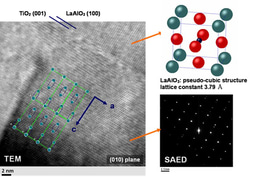From Art Gallery to Studio: Revolutionizing Teaching Mathematics Through Creation
Published in Education and Mathematics

We live in an age of exponential growth in knowledge, and it is increasingly futile to teach only polished theorems and proofs. We must abandon the guided tour through the art gallery of mathematics, and instead teach how to create the mathematics we need. In my opinion, there is no long-term practical alternative.
— Richard Hamming
Richard Hamming, a pioneer in the fields of computer science and mathematics, succinctly captured this sentiment with his statement: "The purpose of computing is insight, not numbers." This insight-driven approach should extend beyond computing and into the broader realm of mathematics education. Rather than guiding students through a curated tour of established mathematical art, we need to teach them how to be the artists themselves.
The Limitations of Traditional Mathematics Education
The traditional mathematics curriculum often resembles an art gallery, where students are led through a series of beautifully crafted theorems and proofs. While this approach has its merits, it falls short in preparing students for real-world applications. The rapid pace of technological and scientific advancements demands a more dynamic and creative approach to mathematics education.
In the conventional model, students are passive recipients of knowledge, learning to appreciate the beauty of existing mathematical structures without being encouraged to contribute to their creation. This method overlooks the importance of problem-solving, critical thinking, and innovation—skills that are essential in today's world.
Shifting Focus to Mathematical Creativity
To address these shortcomings, we must shift our focus from merely teaching established mathematical concepts to fostering the ability to create new mathematics. This involves encouraging students to engage with open-ended problems, explore uncharted territories, and develop original solutions. By doing so, we cultivate a mindset that values creativity and innovation over rote memorization.
New Methods for Teaching Mathematics
- Project-Based Learning (PBL):
- Real-World Problems: Engage students with projects that address real-world issues. For example, tasks like optimizing a city's public transportation system or modeling the spread of diseases can show the practical applications of mathematical concepts.
- Collaborative Work: Encourage teamwork, where students collaborate to find solutions, mimicking the collaborative nature of scientific research and development.
- Inquiry-Based Learning (IBL):
- Open-Ended Questions: Pose open-ended questions that require students to investigate and explore various mathematical concepts. This method encourages deeper understanding and fosters curiosity.
- Student-Led Investigations: Allow students to lead investigations into topics of their interest, promoting ownership and intrinsic motivation in their learning journey.
- Use of Technology and Computational Tools:
- Computer Algebra Systems (CAS): Integrate tools like Mathematica or Maple, which allow students to experiment with complex algebraic computations and visualizations.
- Dynamic Geometry Software: Utilize software such as GeoGebra to help students explore and visualize geometric concepts dynamically.
- Programming: Teach students programming languages like Python or MATLAB to solve mathematical problems, thereby enhancing their computational thinking skills.
- Mathematical Modeling:
- Modeling Workshops: Conduct workshops where students create and analyze models to solve practical problems, such as predicting economic trends or simulating ecological systems.
- Interdisciplinary Projects: Encourage projects that combine mathematics with other disciplines, like physics, biology, or economics, demonstrating the interconnectedness of knowledge.
- Flipped Classroom Model:
- Pre-Class Preparation: Provide lecture materials and readings for students to review before class, freeing up classroom time for hands-on activities and discussions.
- Active Learning: Use class time for active learning exercises, such as problem-solving sessions, group work, and interactive simulations.
Integrating Technology and Computing
The integration of technology and computing into mathematics education is another crucial step in fostering mathematical creativity. Tools such as computer algebra systems, dynamic geometry software, and programming languages can empower students to experiment, visualize, and solve complex problems. By leveraging these tools, we can provide students with a deeper understanding of mathematical concepts and their applications.
Richard Hamming's assertion that "the purpose of computing is insight, not numbers" underscores the importance of using technology to gain a deeper understanding of mathematical principles. Computing allows us to explore patterns, test hypotheses, and develop new theories in ways that were previously unimaginable. By incorporating computing into the mathematics curriculum, we equip students with the skills to harness the power of technology in their mathematical endeavors.
The Long-Term Practical Alternative
In my opinion, there is no long-term practical alternative to this shift in mathematics education. As we continue to advance technologically and scientifically, the ability to create new mathematics will become increasingly essential. By embracing a more dynamic and creative approach to mathematics education, we prepare students to thrive in an ever-changing world.
The traditional guided tour through the art gallery of mathematics has served its purpose, but it is time to move beyond it. We must inspire and equip the next generation of mathematicians to be the creators of the mathematical art that will shape our future.
Personal Application in Teaching
In my own classes, particularly those focused on computer mathematics and programming-related mathematics, I employ a unique approach to foster creativity and independent thinking. I start by presenting students with practical, sometimes seemingly trivial problems to help them feel comfortable and engaged. Like philosophers like Socrates, I do not provide direct answers; instead, I encourage students to explore solutions on their own.
I ask students to work in groups to find logical proofs for their solutions, promoting collaboration and collective problem-solving. When it comes to coding formulas, I challenge them to think of new methods and innovative solutions. Almost always, they come up with creative ideas. If they encounter difficulties, I avoid giving direct answers. Instead, I pose questions to the entire class, prompting them to think critically and collaboratively.
When students struggle to find the correct solution, I offer guiding clues rather than complete answers. This approach guides them towards new ways of thinking and helps them understand that being wrong is not a failure but an opportunity to change their perspective and approach problems from different angles. This method nurtures a mindset where mistakes are seen as valuable learning experiences, encouraging continuous growth and innovation.
Embracing Change and Innovation
As Leo Tolstoy once said, "Everyone thinks of changing the world, but no one thinks of changing himself."
We all desire change, but those who actively work to bring it about are the ones who make a difference. In the context of mathematics education, this means educators, policymakers, and students must all embrace this shift towards creativity and innovation.
Similarly, the French explorer Andre Gide reminds us that “Man cannot discover new oceans unless he has the courage to lose sight of the shore.”
To discover new mathematical insights and innovations, we must have the courage to move beyond traditional methods and explore uncharted territories in education. Only then can we truly prepare our students for the challenges and opportunities of the future.
So why are you waiting? Let’s do it! Let’s Change!
~ Yasin Asadi





Please sign in or register for FREE
If you are a registered user on Research Communities by Springer Nature, please sign in